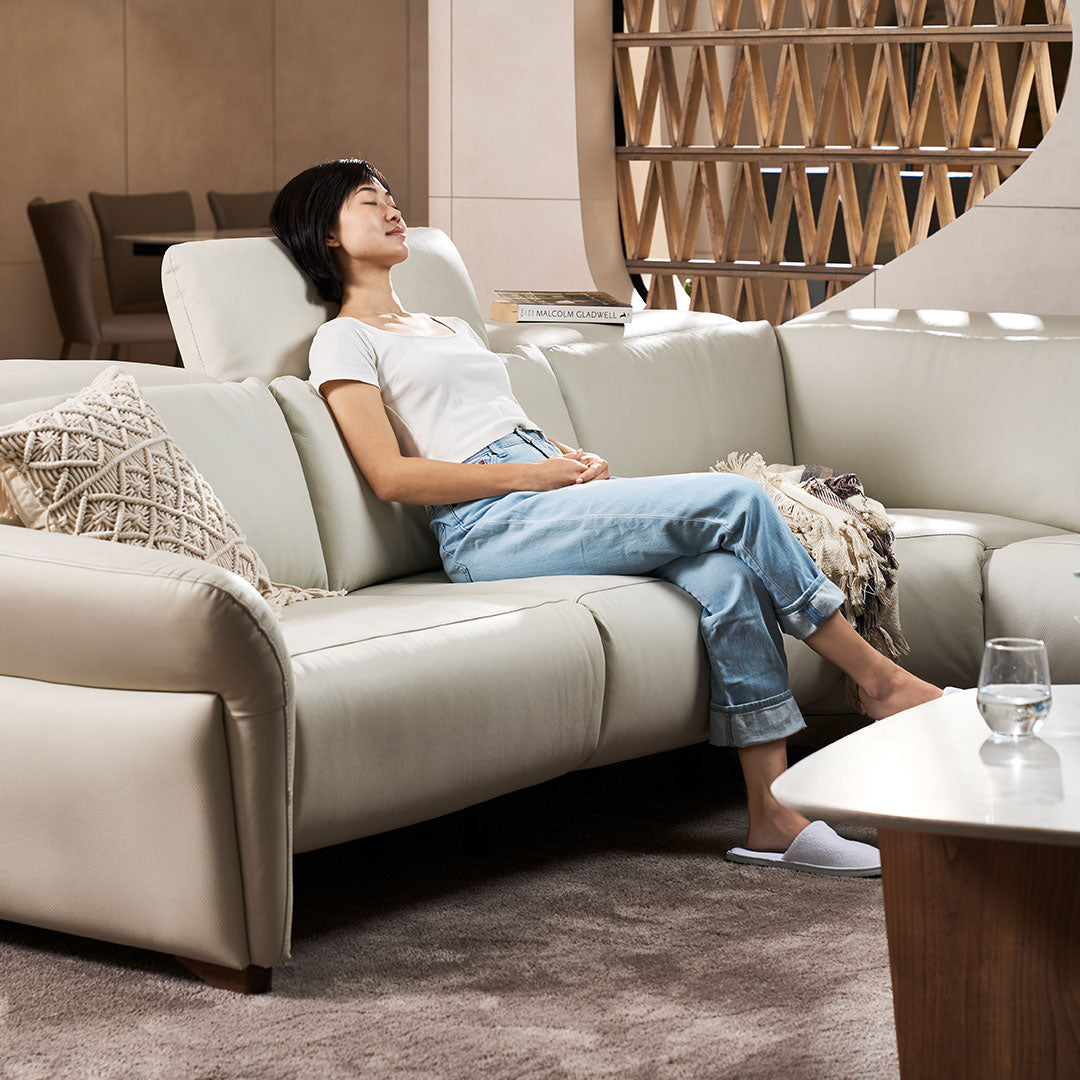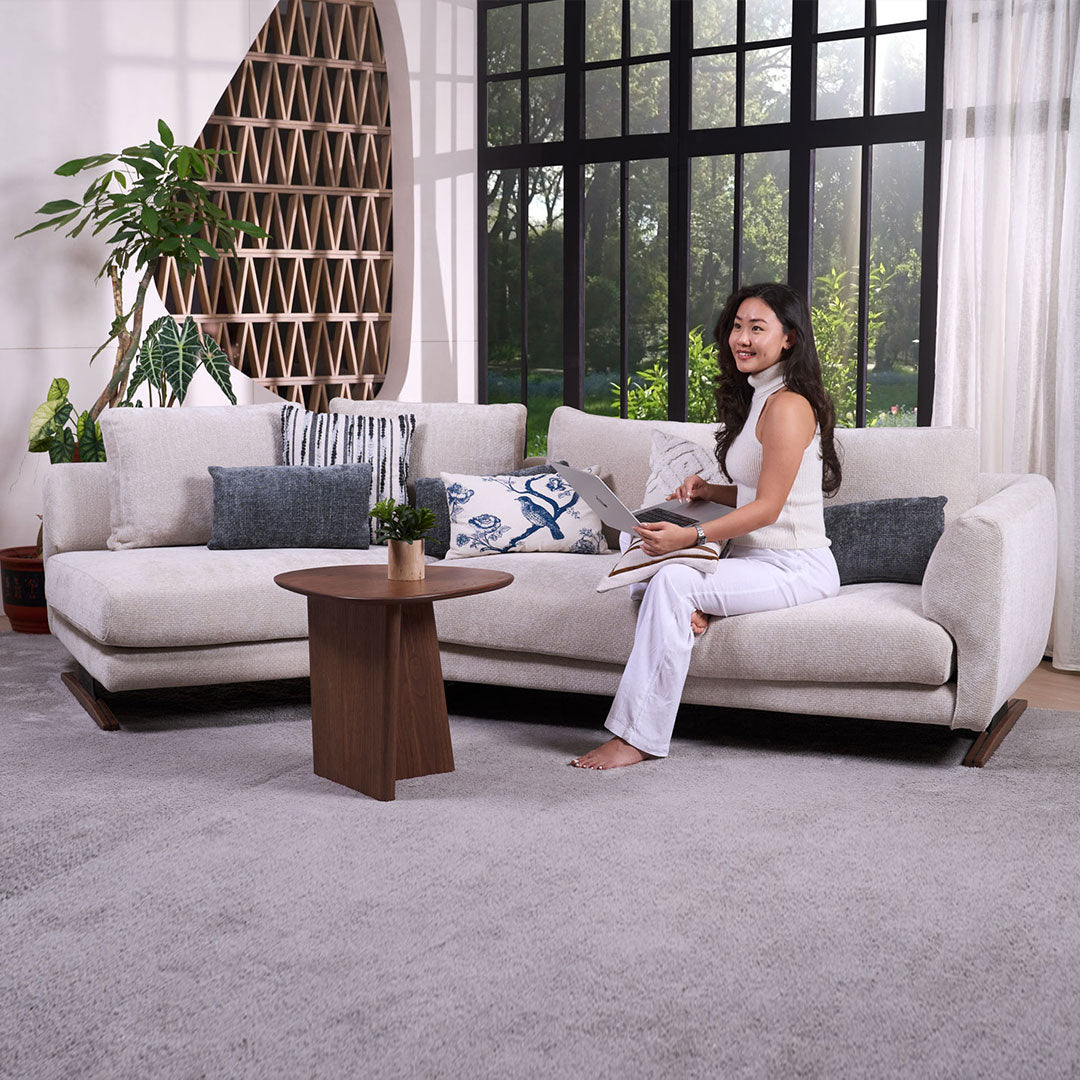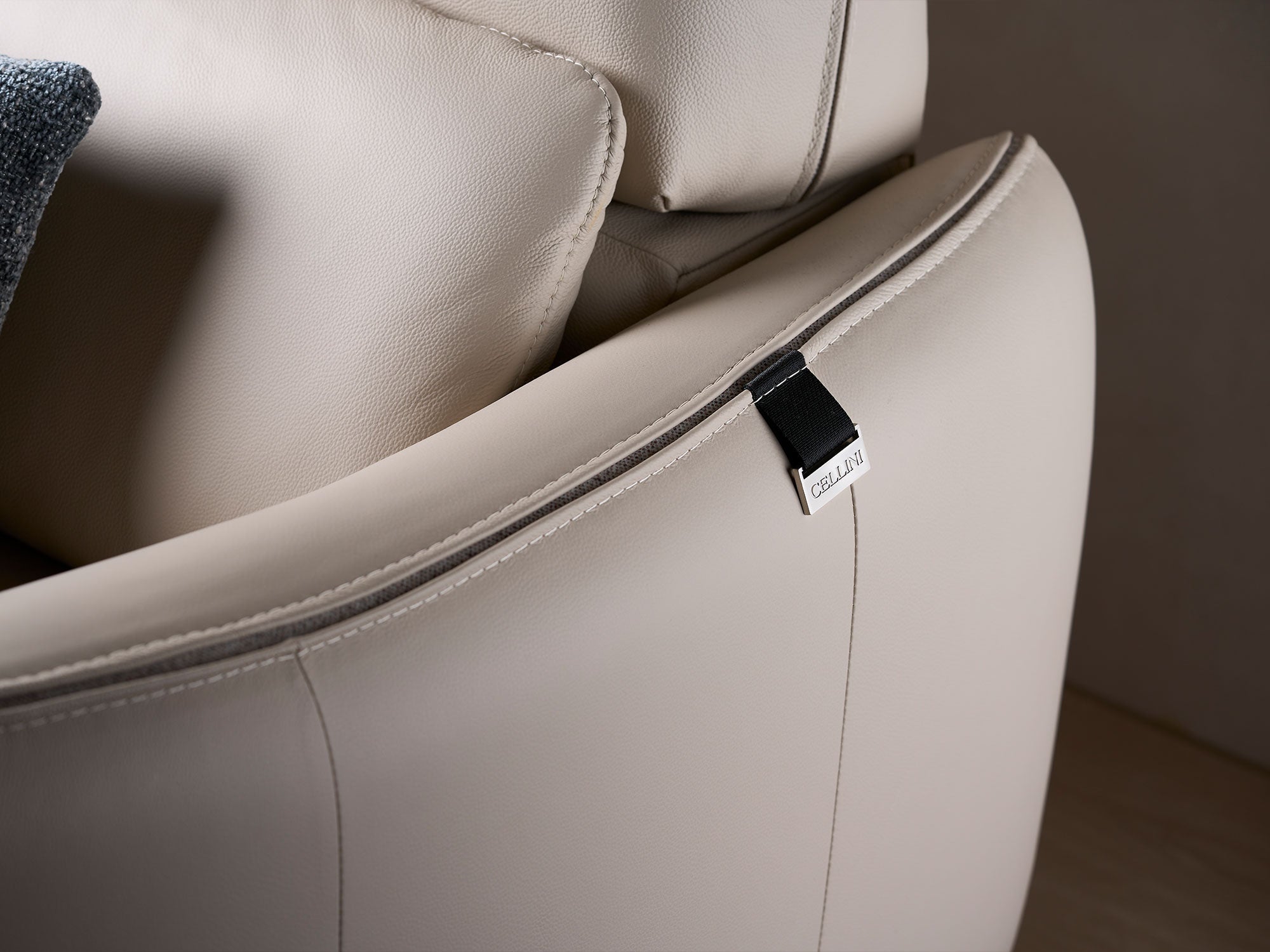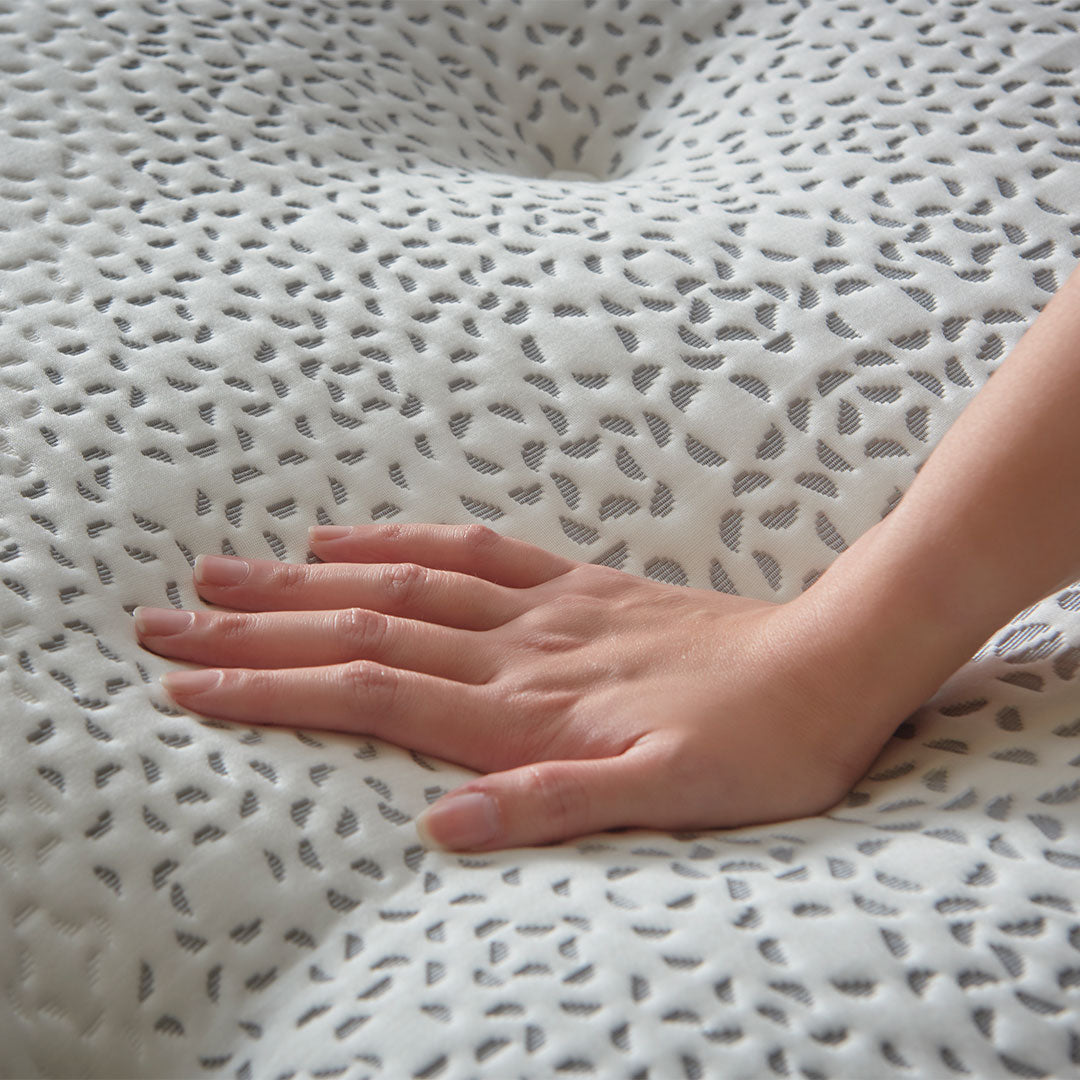Part 1: Introduction

Colour is one of the most powerful tools in interior design. It has the ability to completely transform how a living room feels, whether warm and inviting, bold and energetic, or calm and elegant. More than just a decorative choice, colour shapes atmosphere, mood, and even the way we experience comfort in our own homes.
In Singapore, where compact spaces are common and multipurpose layouts are the norm, selecting the right colour combo for your living room becomes even more important. A carefully chosen palette allows homeowners to maximise space, create flow between open-plan areas, and set the tone for different activities, from entertaining guests to enjoying quiet evenings.
The best part? Choosing colours does not need to be such a complicated endeavour. Start with hues that resonate with you, then build a scheme around how you want the room to feel. From walls to flooring and, of course, the sofa, each element contributes to the bigger picture. Even small changes, like accent cushions, a new rug, or wall art, they can breathe new life into the space without requiring a complete renovation.
In this article, we will explore the psychology of colour, practical styling tips, and the most inspiring living room colour schemes. We will also guide you on modern living room styling and showcase how our very own furniture pieces can complement your desired living room colour combo.
Key Takeaways
- The right colour pairings influence how your living room feels—whether it is calm, energising, or luxurious—and help define its character.
- Pairing furniture such as a leather sofa, fabric sofa, or 3-seater recliner sofa with the right accents could bring balance to your design.
- Understanding warm vs cool colours in interiors allows you to strike the right balance between personality, comfort, and style across your home.
Part 2: Setting the Tone with the Right Colour

2.1 What is Colour Psychology?
Before picking out the colour combo for your living room, it is important to understand colour psychology. This area of study examines how different hues influence our emotions, behaviours, and even physical responses. The colours you select for your space play a vital role in establishing the atmosphere you experience every day when you step into the room.
Research shows that colour can influence moods, encourage relaxation, or even give energy. Warm tones such as reds, oranges, and yellows tend to make a space feel cosy and stimulating. In contrast, cool shades like blues, greens, and purples introduce calmness and serenity, although without balance, they may sometimes feel detached or overly formal. Understanding these differences is essential when selecting the colour combo for your living room.
Personal experience, age, and cultural background also affect how colours are perceived. In Singapore, for instance, red may be associated with prosperity and good fortune, while green suggests freshness and harmony with nature. These layers of meaning add nuance to your decisions.
When picking out a colour combo for your living room, think about the role the space plays in your daily routine. Do you want a vibrant and social environment for entertaining or a restful retreat to unwind after work? Defining this purpose will help guide your palette, whether that means choosing energising warm tones, calming cool shades, or a balanced mix supported by a living room design with neutral palettes.
By applying colour psychology thoughtfully, you can create an interior that looks stylish and suited to the lifestyle you want to lead.
2.2 How Colour Affects Feelings and Spaces
The way colour influences a space is rather profound. It can affect emotions, energy levels, and even how large or small a room feels. This is why choosing the right colour combo for your living room is so important. Warm and cool tones each carry unique psychological effects, and the balance between them determines whether a space feels inviting, calm, or overwhelming.
- Warm colours (red, orange, and yellow) often radiate vibrancy and cosiness, which is why they are frequently used in social areas. At the same time, too much intensity may feel overpowering in compact flats. Pairing warm shades with neutrals, or using them as accents, is a great way to balance out all that energy.
-
Cool colours (blue, green, and purple) bring calmness and serenity. They are perfect for creating a restful retreat after a long day. However, if used in isolation, they may make interiors feel impersonal or chilly. Combining them with warmer accents or textured materials could help humanise the space.
Throughout history, colour has also held symbolic meanings:
- Red: Passion, excitement, celebration
- Pink: Softness and calm
- Purple: Luxury and creativity
- Blue: Peace and stability
- Green: Renewal and growth
- Yellow: Optimism and joy
- Orange: Warmth and kindness
- White: Purity and neutrality
-
Black: Sophistication and depth
Understanding these associations helps when choosing a colour combo for your living room. For example, a navy blue paired with soft beige balances cool serenity with warmth, while a charcoal wall with wine-red accents creates a sense of intimacy.
By considering both psychology and symbolism, you can accurately convey the emotions and atmosphere that you want for your living room.
2.3 Why Thoughtful Colour Planning Matters
A well-coordinated living room colour combo requires careful planning. Getting it right not only beautifies the space; it also creates harmony and sets the tone for how you and your guests experience the room. Without a clear plan, the overall design can feel mismatched or chaotic, especially in open-plan homes where the living room flows into dining and kitchen areas. A cohesive approach ensures that every element, from your sofa to the wall paint, contributes to a synergised look.
The right living room colour combo also helps anchor your furniture choices. For example, a bold leather sofa could act as a statement piece when surrounded by a neutral palette, while a softer fabric sofa might benefit more from warm accents to avoid looking washed out. Colour planning ensures that these combinations feel intentional rather than accidental.
Here are some of the basic principles of colour styling that you should know:
1. Warm vs. Cool Colours in Interiors
Warm colours like red, orange, and yellow bring energy and intimacy. Cool tones such as blue, green, and purple create calmness and spaciousness. Mixing both prevents extremes and keeps the space comfortable.
2. Neutral Foundations
Greys, taupes, beiges, and whites provide flexible backdrops. These neutral colours make it easy to refresh accessories or swap accent pieces without starting over.
3. Accent vs. Dominant Colours
Dominant colours appear in large elements, such as walls, rugs, or even a 3-seater recliner sofa. On the other hand, accent colours show up in cushions, art, or lighting. Knowing how to decorate with accent colours is just as important, as even the little details can help add depth to the space without overwhelming it.
Understanding these rules when picking out a colour combo for your living room can give you a better idea of where each colour should go, helping you put together a cohesive plan on how the living room should ultimately look.
Part 3: Playing with Colours: Bringing Your Living Room to Life

3.1 How to Combine Colours for Your Living Room
Once you understand colour psychology and the basics of planning, the next step is to learn how to combine shades effectively. The right living room colour combo brings balance, flow, and personality, ensuring that your home feels both stylish and comfortable. Applying a few design principles makes the process more approachable and helps you avoid trial-and-error mistakes.
Follow the 60-30-10 Rule
This timeless rule provides structure when building living room colour schemes. Allocate 60% to a dominant colour (walls, major furniture such as your sofa, or a large rug), 30% to a secondary colour (curtains, accent chairs, or shelving), and 10% to an accent colour (cushions, artwork, or décor). A light-grey backdrop with a navy fabric sofa and mustard cushions is an excellent example of this principle at play.
Keep Your Colour Flowing
In many Singaporean homes, living and dining areas are part of one open space. Choosing a consistent colour combo for your living room and across these connected areas will undoubtedly result in greater harmony. The rooms do not need to be identical, but colours should feel coordinated, giving the home a more cohesive look.
Use the Colour Wheel for Smart Pairings
Complementary colours, such as blue and orange or yellow and purple, sit opposite each other on the wheel and create striking combinations. Analogous colours, which sit side by side, produce softer harmony. Both approaches have their advantages and can be adopted into modern living room styling.
Find the Right Temperature Balance
When it comes to warm vs cool colours in interiors, it is important to find the right balance. Too much warmth may feel overwhelming, while too much coolness risks sterility. Balancing both keeps the temperature comfortable enough.
By following these guidelines, you can layer shades effectively and achieve a balanced, professional look in your living space.
3.2 What are Some Recommended Colour Combos?
When deciding on a living room colour combo, it helps to explore tried-and-tested pairings that designers often use. These combinations balance style, mood, and practicality, both in colour and furniture. Here are five versatile ideas that work beautifully in Singaporean homes.
1. Grey and Burnt Orange: Modern and Cosy
Grey provides a timeless neutral base, while burnt orange adds vibrancy. A sleek grey leather sofa paired with burnt orange cushions or rugs delivers warmth without overwhelming the space.
2. Wine Red and Charcoal: Dramatic and Luxurious
This pairing creates depth and intimacy, making it ideal for formal settings. A wine-red fabric sofa against charcoal-toned feature walls introduces a bold yet sophisticated feel, which works great for contemporary apartments.
3. Soft Beige and Olive Green: Calming and Natural
For a serene atmosphere, beige acts as a soft foundation, while olive green accents through curtains or plants bring a touch of nature indoors. A beige 3-seater recliner sofa could be a great way to further enhance comfort and relaxation.
4. Navy Blue and Light Grey: Sophisticated and Timeless
This combination suits both traditional and modern living room styling. A navy feature wall paired with a light-grey modular sofa creates balance, making it one of the most popular living room colour combos in compact flats.
5. Dusty Pink and Taupe: Romantic and Fresh
Taupe anchors the space with elegance, while dusty pink accents, such as throws or cushions, add softness. Pair a taupe sofa with metallic décor for a subtle yet refined look.
Exploring these palettes demonstrates how the right colour combo for your living room can set the tone for any mood, from energising and dramatic to calm and understated.
3.3 Colour Play with Cellini: How to Style with Intentional Colour Planning
As one of Singapore’s leading furniture shops, our team at Cellini is committed to delivering high-quality furniture that can complement a wide range of living space designs. Our sofa collections, for instance, showcase how thoughtful furniture design can elevate any living room colour combo. The versatility of their sofas ensures that homeowners can easily match palettes to both compact and spacious interiors. By pairing each piece with the right tones, textures, and accents, you can achieve a space that feels cohesive and stylish.
Borges Modular Leather Sofa
Available in striking shades like Volcanic Orange and Wine Red, this sofa is the highlight of any room. Pairing it with neutral walls and wooden accents grounds its boldness, while metallic décor adds a touch of luxury. It is ideal for modular sofa living room ideas where flexibility and personality are equally important.
Homer Motorised Fabric Recliner Sofa
Designed with comfort in mind, the Homer recliner features understated tones such as Neue and Cream. Its subtle presence allows you to experiment with accent colours—think navy cushions, terracotta rugs, or even muted greens. This makes it an excellent choice for a calming neutral living room.
Korus 3-Seater Leather Sofa with Adjustable Headrest
The Korus offers a warm cinnamon hue that pairs beautifully with taupe, cream, and brass accessories. By layering textures, such as velvet cushions, glass lighting, or patterned rugs, you can make the most of accent colours to create a well-balanced living room.
Chester Genuine Cowhide Leather Stool
Available in khaki and wine red, this versatile piece adapts easily to different living room colour schemes. Use it to inject personality into a minimalist setting or to complement a bolder palette.
With Cellini, every living room colour combo feels achievable with the right sofa. It anchors the palette and guides the selection of accessories and accent pieces for a truly harmonious design.
Frequently Asked Questions
1. What is the best colour combination for a modern living room?
Modern palettes often combine neutrals with bold accents. Grey with burnt orange, navy with light grey, or beige with olive green are excellent living room colour combos.
2. How do I choose the right sofa colour for my living room?
Consider wall and flooring tones. A leather sofa in neutral shades offers versatility, while a bold fabric sofa in wine red or navy acts as a striking statement. Always factor in natural light.
3. Can I mix textures in modern living room styling?
Yes. Mixing textures adds richness. Pair a 3-seater recliner sofa with woven rugs, velvet cushions, or wooden furniture for balance. Texture enhances colour depth and adds personality.
Colour is more than decoration; it is a design strategy that defines mood, function, and personality. The right colour combo for your living room can make a compact flat feel more spacious or transform an open-plan layout into a warm, inviting retreat. From neutral foundations to bold new experiments, thoughtful planning goes a long way in creating balance and style.
Here at Cellini, we offer expertly designed furniture to anchor these schemes, from versatile modular sofas to timeless leather or fabric counterparts. Whether you are exploring the best colour combinations for sofas or integrating tried-and-tested presets, our range of designer furniture ensures that your living room reflects comfort, elegance, and individuality.
To learn more about our full catalogue of furniture, including sofas, tables, and more, please contact us today.







